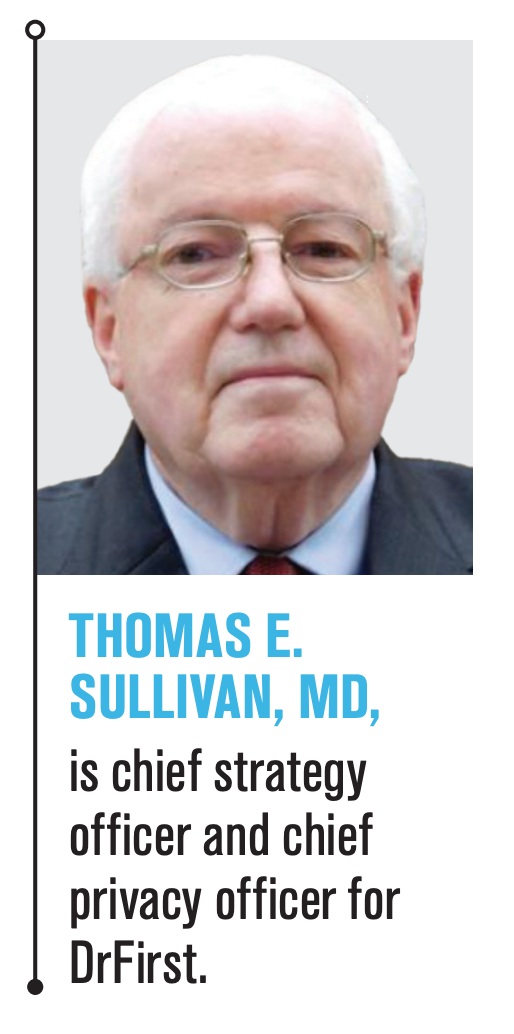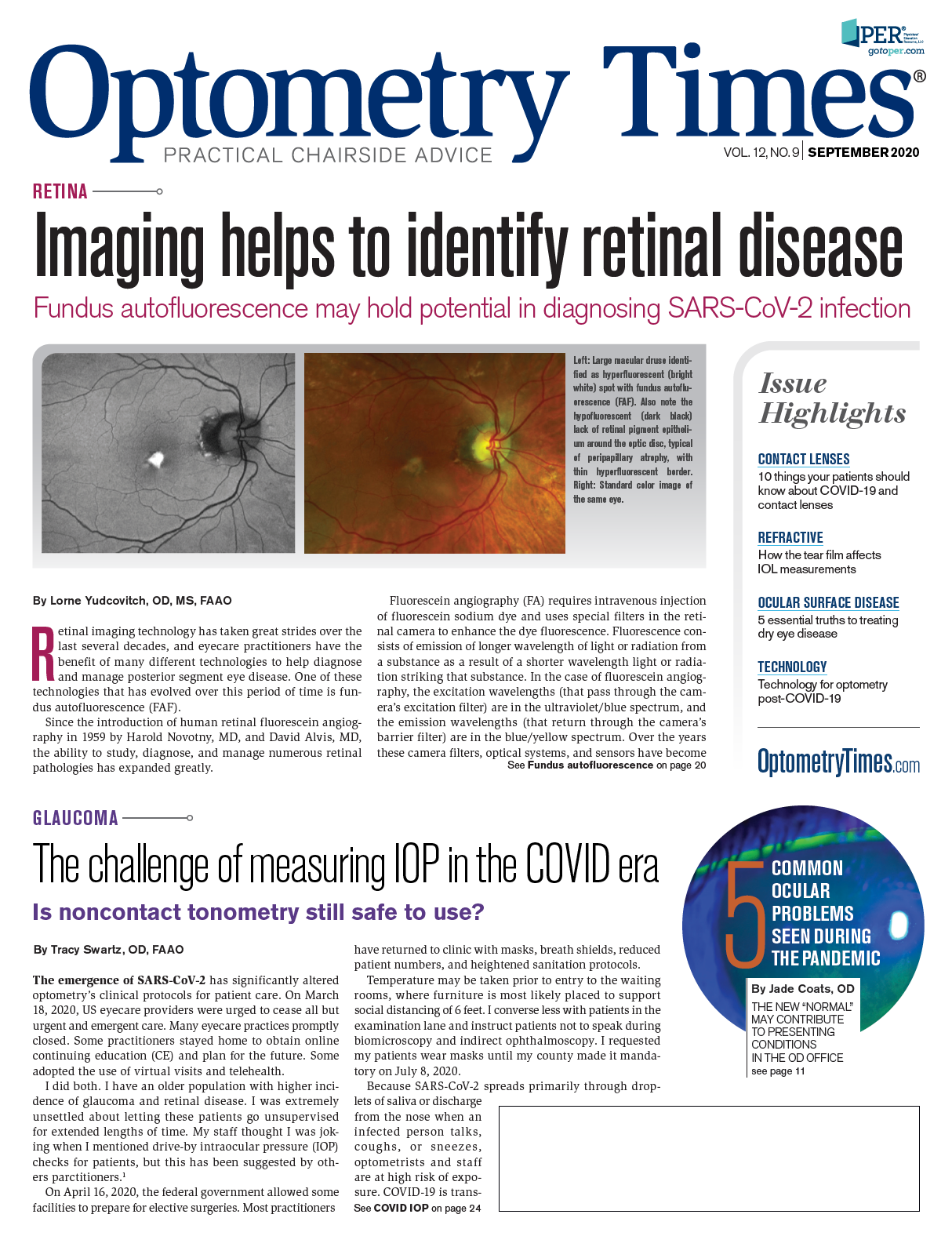- Therapeutic Cataract & Refractive
- Lens Technology
- Glasses
- Ptosis
- AMD
- COVID-19
- DME
- Ocular Surface Disease
- Optic Relief
- Geographic Atrophy
- Cornea
- Conjunctivitis
- LASIK
- Myopia
- Presbyopia
- Allergy
- Nutrition
- Pediatrics
- Retina
- Cataract
- Contact Lenses
- Lid and Lash
- Dry Eye
- Glaucoma
- Refractive Surgery
- Comanagement
- Blepharitis
- OCT
- Patient Care
- Diabetic Eye Disease
- Technology
Improve medication adherence with technology
Technology can facilitate secure communication between physician and patient

When considering the importance of medication adherence, former U.S. Surgeon General C. Everett Koop said it best: “Drugs don’t work in patients who don’t take them.” That was 35 years ago, and the issue remains a major area of concern for clinicians today.
One-fourth of new RXs are never filled—and even when filled, up to 50 percent of patients with chronic conditions fail to take their medications as prescribed. These statistics reflect the situation before COVID-19 led to social distancing and stay-at-home orders that may be making the situation worse.
Medication nonadherence can lead to serious health consequences and higher medical costs. Each year, medication nonadherence results in approximately 125,000 deaths and up to 25 percent of hospitalizations, which is estimated to cost the American health care system nearly $300 billion.
As the number of coronavirus cases continues to grow across the U.S., medication adherence has never been more critical, especially for elderly patients and those with chronic conditions who are the most susceptible to complications, including death, from COVID-19, according to the Centers for Disease Control and Prevention (CDC). To protect the most vulnerable patients, physicians and pharmacists must work together to identify the underlying reasons patients aren’t taking their medications as prescribed and to provide solutions that improve adherence.
There are 3 primary reasons why patients don’t fill new RXs or take their medications as directed: high cost, lack of symptoms, and forgetfulness.
Financial concerns
A major contributor to medication nonadherence is high out-of-pocket costs for prescription drugs, as shown by the results of a recent consumer survey. In the survey, 48 percent of respondents reported not filling a prescription within the last few years because of cost. The survey also found that even a $10 rise in copay increases the likelihood of prescription abandonment by as much as 19 percent.
Results of a study published in Annals of Internal Medicine also found a direct correlation between the amount of a patient’s copay and the likelihood of prescription abandonment. Patients with $50 copays were nearly four times more likely to abandon a prescription at a pharmacy than patients paying $10.
Today, millions of Americans have lost their jobs, their health insurance and the incomes they used to pay for out-of-pocket health care costs. One in seven report they would avoid seeking care for potential COVID-19 symptoms because of cost concerns, according to a recent Gallup-West Health poll. Unless patients find some financial relief, medication nonadherence rates surely will rise.
Lack of symptoms and misunderstanding of disease
Patients often do not understand why they need certain medications. It’s not uncommon for a person to say they don’t feel their blood pressure is high or that they don’t have any symptoms from high cholesterol. If they don’t feel sick, people may stop taking their medications, which can have serious consequences over time. This situation often leads to unnecessary visits to the emergency department and, occasionally, hospital admissions that could have been avoided.
During the current health crisis, we have all been encouraged to stay at home, limit trips to the grocery store and pharmacy and postpone nonessential medical care. This means patients may have less interaction with physicians and pharmacists who can educate them about prescribed therapies. Now is the time for care team members to adopt proactive measures to make sure patients understand what their medications are for, how to take them and why doing so as prescribed is important.
Delaying or forgetting to pick up prescriptions
Even in our former everyday lives, it was easy enough to put off a trip to the pharmacy for a prescription. Now, as many of us remain sheltered at home, it’s a challenge to recall what day it is, much less remember to pick up a prescription.
Using reminder tools that notify patients when medications are prescribed and when they are ready for pickup, pharmacists and physicians can help reduce prescription abandonment. Many independent pharmacies and national chains are offering free delivery services for prescriptions, which is particularly beneficial for patients who feel leaving home could compromise their health. Additionally, health plans have eased restrictions on filling prescriptions in larger quantities, reducing trips to the pharmacy.
Improving medication adherence with technology
Care team members can improve medication adherence and health outcomes by leveraging technologies that provide price transparency, offer access to educational materials and send reminders directly to patients’ mobile devices. Technology also can facilitate secure communication between prescribers and pharmacists.
For example, when prescribers see patient-specific drug pricing details at the point of encounter within prescribing workflows, it empowers them to discuss formulary options and out-of-pocket costs with patients and potentially review financial assistance options if cost is a barrier. Real-time price transparency tools let patients know exactly how much their medication will cost before going to the pharmacy. These tools eliminate the “sticker shock” experienced when the pharmacist accesses the patient’s health plan benefits to discover the medication is unaffordable for the patient.
Care providers also can reduce financial barriers with new technology that gives patients direct access to copay assistance options. Emerging solutions may link patients to educational content about prescribed medications, giving them a better understanding of the prescribed therapy.
Better communication between pharmacists and doctors
Physicians and pharmacists can further drive adherence by sending automatic reminders to patients’ smartphones, for example, to notify them when a prescription is sent to the pharmacy or when a prescription is ready. Such tools may allow patients to set reminder notices to pick up their medication. By committing to a specific time, patients are more likely to pick up their prescriptions and more likely to take them.
Sometimes, RXs are not filled in a timely manner because the pharmacist needs additional clarification from the physician or the payer. A pharmacist call the physician and leave a message, which starts a time-delaying game of phone tag. To increase efficiency, improve coordination and ultimately fill prescriptions more quickly, a patient’s care team can communicate directly using secure texting, email or videoconferencing technology.
COVID-19 has affected every aspect of our lives and created tremendous financial and emotional strain for many of the most vulnerable patients. Health care professionals must help patients overcome any hurdles standing in the way of medication adherence, including financial and safety concerns. With the right communication and educational tools, providers can help ensure patients take the medicines they need, especially those managing chronic conditions or at the highest risk of complications.

